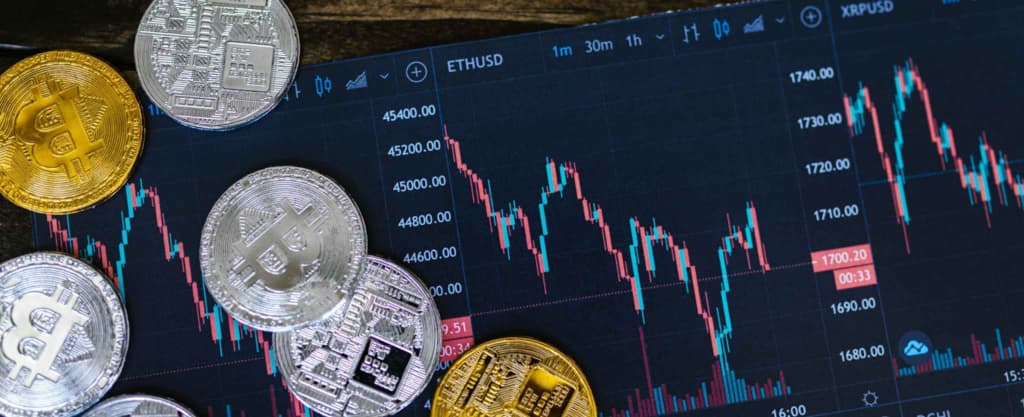Cryptocurrency has emerged as a popular but volatile investment option. Unlike traditional investments, cryptocurrencies are known for their rapid price fluctuations, introducing a unique set of risks and opportunities for investors. This article aims to explore the financial implications if your crypto investments go negative, a concern for many in the crypto trading community.
Understanding Negative Balances in Crypto
In the world of cryptocurrency, the concept of a negative balance is fundamentally different from that in traditional finance. Negative balances in crypto typically occur in margin trading, where investors borrow funds to invest in cryptocurrencies. If the value of the cryptocurrencies falls significantly, the investor might end up owing more than the original investment, leading to a negative balance. However, it’s important to distinguish this from a ‘notional loss’, which is the decrease in the value of your crypto assets due to market fluctuations but not an actual debt until realized.
For instance, if you buy 1 BTC for $30,000 and the value drops to $20,000, you have a notional loss of $10,000. However, you don’t owe this amount to anyone unless you’ve borrowed funds to make the purchase. In spot trading, where you’re trading with your own funds, your balance can’t go negative as you can’t lose more than your initial investment. The situation changes in margin or leveraged trading, where the possibility of a negative balance becomes a risk. Understanding these scenarios is crucial for any investor engaging in the volatile crypto market.
How Crypto Investments Differ from Traditional Loans
Crypto investments and traditional loans differ in several key aspects. Firstly, traditional loans have a fixed repayment schedule, where the borrower agrees to pay back the borrowed amount plus interest over a set period. In contrast, crypto investments do not involve repayment obligations unless leverage or margin trading is involved.
In traditional lending, the lender has a claim on the borrower’s future income and assets until the loan is repaid. In cryptocurrency investments, there’s no such claim as the investor is using their own funds. However, when engaging in margin trading in the crypto world, investors essentially take a loan from the platform to invest in cryptocurrencies. This borrowed investment can amplify both gains and losses.
Another critical difference lies in the collateral. Traditional loans often require physical assets as collateral, whereas in crypto margin trading, the collateral is in digital assets, which are more volatile. The high volatility of cryptocurrencies can lead to rapid margin calls or liquidation of positions if the market moves unfavorably. These unique characteristics of crypto investments mean that while they offer high potential returns, they also come with a unique set of risks, particularly when leverage is used.
Scenarios When You Might Owe Money
In cryptocurrency trading, there are specific scenarios where you might end up owing money, primarily if you’re involved in margin trading. When you trade on margin, you’re borrowing money from the exchange to invest, which can amplify both profits and losses. If the market moves against your position significantly, you could end up owing more than your initial investment.
One common scenario is a margin call. This occurs when the value of your account falls below the exchange’s required minimum margin, prompting you to add more funds to your account or risk having your position liquidated. If you can’t meet the margin call, the exchange may liquidate your position, and if the losses exceed your account balance, you will owe the deficit to the exchange.
Another scenario is the liquidation of your positions. In highly leveraged trades, small market movements can significantly impact your investment. If the market drops sharply, your losses can exceed your initial investment, leading to a negative balance in your account. Some exchanges have policies to prevent accounts from going negative, but not all do.
Lastly, certain platform-specific policies could lead to owing money. Some crypto trading platforms may allow for a negative balance in certain situations, and users are obligated to settle such balances as per the platform’s terms and conditions.
Comparing Crypto Platforms: Negative Balance Policies
Different platforms have varied policies regarding negative balances. Here’s a comparison:
| Feature | Coinbase | Binance | Platform C |
|---|---|---|---|
| Negative Balance Protection | Yes | No | Yes |
| Margin Call Policy | Clear Guidelines | Immediate Liquidation | Risk Alerts |
| Leverage Limits | Up to 2x | Up to 10x | Up to 5x |
Managing Risks in Crypto Investments
- Understand Leverage: Be cautious with leveraged trading;
- Stay Informed: Keep up-to-date with market trends and platform policies;
- Diversify: Don’t put all your investments in one cryptocurrency.
Video Guides
If you still have questions, we suggest you watch this video. Enjoy watching it!
Wealthsimple Buy Crypto: A Safer Approach to Cryptocurrency Investment
While discussing negative balances and the risks associated with leveraged crypto trading, it’s important to consider platforms like Wealthsimple and their approach to cryptocurrency investment. Wealthsimple Crypto offers a more straightforward and potentially safer way to buy and invest in cryptocurrencies, particularly for those cautious about the complexities and risks of margin trading.
Key Features of Wealthsimple Crypto:
- Direct Investment: Unlike platforms that offer margin trading, Wealthsimple allows users to buy cryptocurrencies directly, using their own funds. This approach eliminates the risk of negative balances due to leveraged positions;
- Simplified Trading Experience: Wealthsimple’s platform is designed for ease of use, making it accessible for beginners. This simplicity helps in making informed decisions without the confusion of complex trading tools;
- No Leverage Trading: By not offering leveraged or margin trading, Wealthsimple reduces the risk of significant financial losses beyond the initial investment, a concern in more advanced crypto trading platforms.
Comparative Safety:
- Reduced Risk of Debt: Since users are not borrowing funds to trade, they are not at risk of owing money beyond their investment;
- Market Volatility Impact: While market volatility affects all forms of crypto investment, the direct purchase approach of Wealthsimple mitigates the risk of amplified losses.
Who Should Consider Wealthsimple?
- New Crypto Investors: For those new to crypto, and wanting a straightforward buying process;
- Risk-Averse Traders: Investors looking to avoid the complexities and risks associated with margin trading.
Conclusion
Understanding the financial implications of negative balances in crypto is crucial. While you may not always owe money if your crypto investment goes negative, certain scenarios, especially involving leveraged trading, can lead to debt. Choosing the right platform and employing effective risk management strategies are key to navigating the complex world of cryptocurrency investments.




